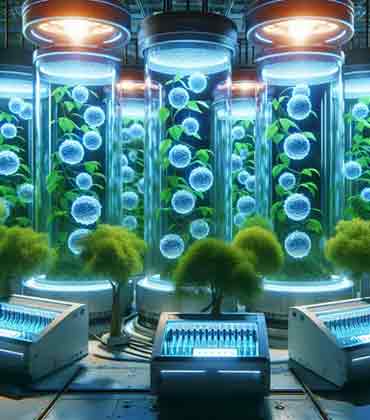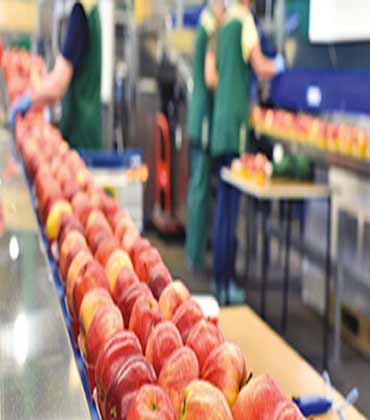THANK YOU FOR SUBSCRIBING
By Todd Jongen, Director Non-Foods Product Development and Packaging Science, US Foods
A Brief History of Carry-Out Food Packaging
By Robert Erhard, Head of Dairy, Corporate Sustainable Agricultural Development, Nestle
Transforming the Food Industry Through a Sustainable...

Delivering Value Through Heightened Flavor Experiences
Toshifumi Nozawa, Associate Director, Beverage Technology, T. Hasegawa USA

 Toshifumi Nozawa, Associate Director, Beverage Technology, T. Hasegawa USA
Toshifumi Nozawa, Associate Director, Beverage Technology, T. Hasegawa USAThe food and beverage industry is in a transformative period for product development. After several years of surging consumer demand for innovative food and beverage products, brands are now faced with the challenge of inflation and supply chain disruptions in North America while still offering compelling products that stand out from the competition.
Consumer demands are also evolving in the face of rising food prices and inflation. With discretionary spending on the decline for many Americans, consumers are looking to maximize value in their food and beverage purchases. While the definition of 'value' can vary, to most consumers, it means heightened experiences with foods and beverages that offer premium ingredients and compelling flavors. In many categories, U.S. consumers cite flavor as the most important factor in selecting products, often ahead of price, ingredients or even nutrition. As consumers are introduced to new flavors, they develop a more sophisticated palate and demand even greater flavor intensity and novel ingredients in foods and beverages.
Challenged with creating products that demonstrate value through heightened experiences, brands are leveraging technological advancements in the flavor industry. New technologies have debuted recently that reproduce the ‘first bite’ sensation of experiencing a food or beverage for the first time, packed with intricacy and nuance of flavor. One such example is T. Hasegawa’s HASEAROMATM, a proprietary research and enhancement technology that produces true-to-nature taste profiles in a range of sweet and savory categories. This advanced modulation technology uses specific minor components that can only be detected by the human nose to add depth of flavor, lasting mouthfeel, and authentic aroma.
“As we better understand the biology behind tasting foods and beverages and how flavor molecules and aromatic compounds interact to create flavorful experiences, we continually push the boundaries of technology to create better formulations”
In addition to intensifying flavors, technologies like HASEAROMA make it possible for brands to stand out in a competitive market through the specificity of flavor. As the consumer demand for elevated food and beverage experiences increases, there is a growing need to go beyond basic flavors. Instead of offering a basic ‘mango’ or ‘orange’ flavor, this innovative technology can reproduce the specific flavor profile of varietals like Alphonso mango or Ataulfo mango or offer the distinct difference between a white grapefruit and a pink grapefruit. This level of specificity elevates the overall taste experience and also helps the formulation remain true to nature's essence.
The science of flavor development is continually evolving to help food and beverage brands meet the shifting demands of consumers. Flavor technology isn't limited to developing packaged food and beverage products, either. Several new advancements in flavor science have aimed to solve challenges in food service, such as T. Hasegawa’s ChefAromaTM, which leverages Maillard Reaction flavor technology and real ingredients like butter, onion, and wine to target culinary gold standard recipes and adds complexity and intensity to otherwise mundane foods. Technologies like ChefAroma enable restaurant chefs to speed up the process of preparing dishes by replicating the flavor of ingredients that have been cooking for hours or even help brands ensure that frozen foods remain true to the original recipe after reheating.
The science of flavor development is continually evolving to help food and beverage brands meet the shifting demands of consumers. As we gain a better understanding of the biology behind tasting foods and beverages and how flavor molecules and aromatic compounds interact to create flavorful experiences, we continually push the boundaries of technology to create better formulations. Flavor modulation is at the core of this unique blend of alchemy and biology, and it’s all about finding a balance. Modulation technology can help us enhance sweetness or, enrich umami, or even mask unwanted off-notes and block astringency and bitterness, carefully finding a balanced organoleptic profile that delivers the ultimate flavor experience.
Food and beverage brands that are looking to stand out in the market and offer value to consumers should look to the flavor industry. New technologies that aim to perfect the taste of foods and beverages are constantly emerging. Leveraging these advancements can help brands deliver extraordinary flavor experiences and keep consumers coming back for more.
Read Also















